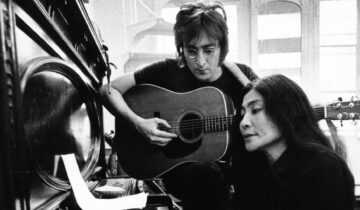Breaking the Mold: Selections from the Washington Gallery of Modern Art, 1961-1968 displayed the Washington Gallery of Modern Art collection, which was purchased by the Museum in 1968. This historically important collection from the former Washington gallery played an important role in the collection and cultivation of contemporary American art movements from the 1950s and 1960s, including late abstract expressionism, color field painting, minimalism, and pop art.
The Washington Gallery of Modern Art (WGMA) was founded in Washington, D.C. on October 28, 1961, to increase the national and international attention given to contemporary art in the nation’s capital. One of the gallery’s earliest exhibitions was the Franz Kline Memorial Exhibition held in 1962. However, the expressed purpose of the gallery was not only to exhibit but also collect contemporary works of art.
With the growth of the National Gallery of Art, a more active contemporary arts program at the Corcoran Gallery of Art, and the building of the Hirshhorn Museum and Sculpture Garden, Smithsonian Institution, the gallery lost its unique place in the Washington art scene. The Oklahoma Art Center, now the Oklahoma City Museum of Art, purchased the WGMA’s 154-piece collection in September 1968.
Breaking the Mold displayed works on paper, paintings, and sculpture from a pivotal time in history, one of transition from postwar abstract expressionism to new artistic developments. With sixty works by fifty artists, the exhibition represented the best of the WGMA collection and included significant twentieth-century artists, such as Richard Diebenkorn, Ellsworth Kelly, Morris Louis, and Marcel Duchamp. Organized thematically, Breaking the Mold was presented in four sections: Late Forms of Expressionism, The New Image, Minimalism, and Washington Color Painters.
The first section, Late Forms of Expressionism, included works by abstract painters, such as Helen Frankenthaler, Theodoros Stamos, Morris Louis, and Jack Tworkov, as well as Grace Hartigan and David Smith. These American artists, influenced by action painters such as Jackson Pollock, gained widespread recognition in the late 1950s and early 1960s and drew attention to New York City as a major cultural center. Also included in this section were works by David Park and Elmer Bischoff. These artists were known as the Bay Area Figurative School, which reincorporated the figure as a subject in art.
The New Image section included the works of the popular art movement, or pop art. The 1963 exhibition The Popular Image, organized for the WGMA, helped bring this art movement to the forefront of the art world. Its emergence on the scene was accompanied by a renewed interest in printmaking and lithography as well as experimentation with different printing methods. Artists represented include Jim Dine, Roy Lichtenstein, Claes Oldenburg, George Segal, and Tom Wesselmann.
The third section, Minimalism, focused on late forms of neoplasticism, represented in a work by Ilya Bolotowsky; op art, by artists such as Richard Anuszkiewicz; and hard edge minimalism found in the large painting Red Blue by Ellsworth Kelly. Also included was a group of screenprints by Josef Albers.
The final section, Washington Color Painters, revealed the importance of the WGMA’s location in Washington, D.C. with works by artists Gene Davis, Sam Gilliam, Tom Downing, Paul Reed, and Howard Mehring. These artists lived and worked in the capital city. They were known for their method of staining a canvas using liquid acrylic paints, which created effects similar to watercolor.
The exhibition was accompanied by a catalogue and audio tour.









